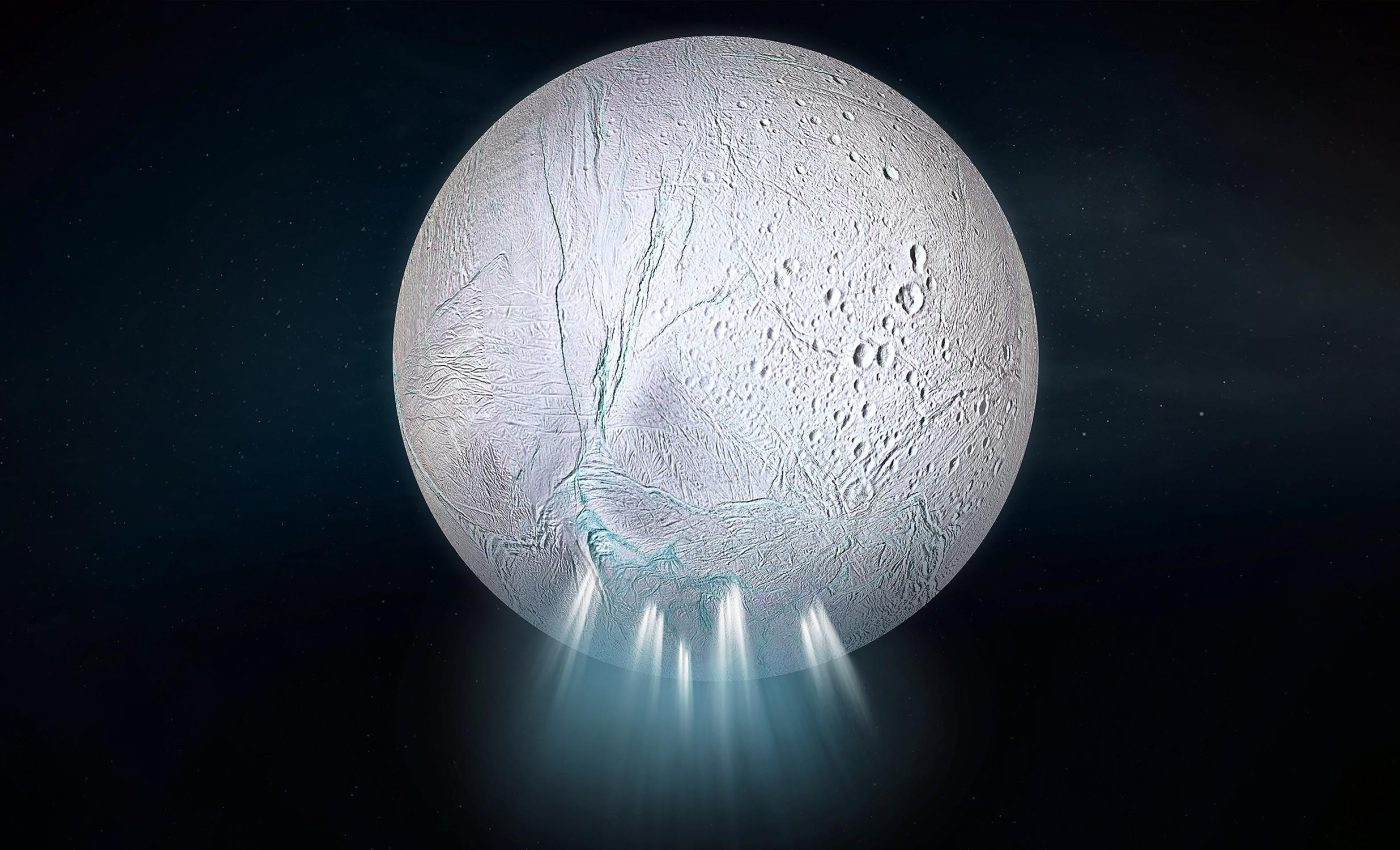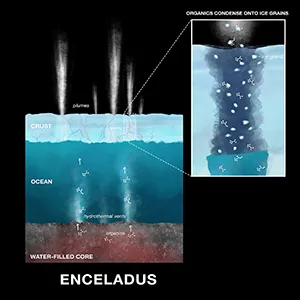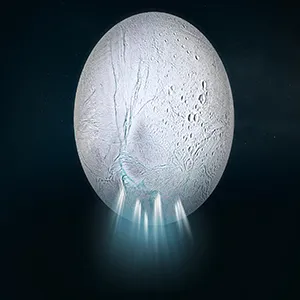
New evidence renews hope of finding life on Saturn's moon Enceladus
NASA’s Cassini spacecraft, which explored Saturn and its moons for more than a decade, has yielded a new discovery. A recent peer-reviewed study found complex organic fragments in fresh ice grains from Saturn’s moon Enceladus, renewing hope that this water world harbors life in its oceans.
These grains were blasted from fractures near the south pole and struck the spacecraft at about 11.2 miles per second during an October 2008 pass.
That fast hit provided a more defined look at the subsurface chemistry than earlier, slower encounters.
Fresh ice grains from an ocean
Saturn’s E-ring is a huge, faint ring of tiny ice particles that orbits far outside of the planet’s main rings
Older grains in Saturn’s E ring can spend years in space, where radiation scrambles delicate molecules. Fresh grains ejected minutes earlier avoid that weathering and better reflect the ocean below.
Cassini’s mass spectrometer measured the ions made when a grain shattered on impact. At very high speeds, water molecules do not clump as much, so signals from organics stand out more clearly.
Lead author Nozair Khawaja of Freie Universität Berlin and the University of Stuttgart led the investigation and interpretation of the mass spectra.
“We are confident that these molecules originate from the subsurface ocean of Enceladus, enhancing its habitability potential,” said Khawaja.
That confidence rests on finding the same families of molecules in both the young plume grains and the older E ring grains. It also rests on laboratory matching of fragment patterns that point to specific chemical groups.
Enceladus’ Ice contains building blocks of life
The team reports fragments that indicate aromatics, esters, ethers, and alkenes, plus tentative nitrogen and oxygen-bearing compounds. In plain terms, they are seeing building blocks that can feed many reaction paths.
These results do not claim life. They point to abiotic chemistry that is active and diverse, which is the kind of chemistry that, under the right conditions, can feed biology.
The range of detected groups matters because it broadens the menu of reactions that can happen in an ocean touching rock. Each group opens different pathways toward more complex products.
Oceans lie below fresh ice
Tiny silica particles first flagged hot rock water interactions under the ice. That evidence comes from a 2015 Nature study that tied silica nanograins to warm, alkaline fluids circulating through a rocky core.
Cassini later detected molecular hydrogen erupting with the plume gases. On Earth, hydrogen like that comes from water reacting with rock in hydrothermal systems, which can provide chemical energy to microbes.
These two lines of data, solids and gases, tell a consistent story. There is liquid water in contact with rock, and water-rock reactions are likely still running.

Elements of life on Enceladus
Phosphorus availability is a key habitability test. Sodium phosphates were found in Enceladus ice grains, at concentrations inferred to far exceed typical levels in Earth’s oceans.
The six essential elements of life – carbon, hydrogen, nitrogen, oxygen, phosphorus, and sulfur – make up nearly all living matter on Earth. These elements are collectively known as CHNOPS.
With phosphorus present, the catalog of known elements on Enceladus now spans most of CHNOPS, along with salts and organics that can act as precursors. The new organics add functional groups used in pathways that make larger molecules.
This is the territory of astrobiology, which asks not only whether water is present, but whether energy and useful chemistry can persist over time.
The answer for Enceladus keeps trending toward yes on conditions, while remaining undecided on life.
Enceladus and Jupiter’s moon Europa
Jupiter’s moon Europa also has a hidden ocean beneath an icy shell.
Unlike Enceladus, Europa’s surface shows signs of older ice movement but does not have active jets that spray fresh material into space. That makes direct sampling more difficult.
The Europa Clipper mission will fly through Europa’s thin atmosphere and study its surface chemistry, but it will not have the same access to pristine ocean material that Cassini enjoyed at Enceladus.
This difference makes Enceladus a more direct target for testing questions about ocean chemistry and habitability.

The role of instrument behavior
Fast impacts helped reveal organics that slower passes could not separate from clusters of water. That instrument behavior is a practical lesson for future samplers that will fly through plumes or collect grains.
This approach also validates the value of single-grain spectra. A lone grain can carry a distinct chemical mix, and averaging many grains can wash out faint signals that matter.
These lessons are already informing design studies. Higher cadence sampling, broader mass ranges, and complementary neutral gas measures will make the next look sharper.
Enceladus, organics, and life
European mission studies are assessing a plan to sample the jets directly and land near the south polar fractures. The concept is simple: fly through the spray, collect fresh grains, and analyze them on the spot.
Landing would let instruments test surface frost chemistry where it falls, and cross-check it against plume sampling. It would also allow longer observations of local temperature, texture, and activity.
Even a null result on biology would be valuable. If an ocean with water, energy, and complex organics shows no life, that would challenge current assumptions about how often life emerges.
The study is published in the journal Nature Astronomy.
—–
Like what you read? Subscribe to our newsletter for engaging articles, exclusive content, and the latest updates.
Check us out on EarthSnap, a free app brought to you by Eric Ralls and Earth.com.
—–













